SkyRunner Flying UTV Review + Video
Engine (Ground): 952cc SOHC v-Twin
Next level is a term thrown around a lot every time a manufacturer introduces a new vehicle platform to the market. Typically that translates into a boost in horsepower and more suspension travel. But a flying UTV takes next level to the next level. That’s what SkyRunner LLC has accomplished with its new vehicle platform dubbed the SkyRunner, which cleverly combines the worlds of aviation and off-road into a single, multipurpose and action packed adventure vehicle.
Is it an aircraft or an off-road vehicle?
Well, it’s both. Technically speaking, the SkyRunner is an FAA approved light-sport aircraft that is classified as a powered parachute. We know what you’re thinking; visions of small, tricycle-like machine’s with large props on the back that are capable of flight but really serve no purpose on the ground are probably filling your head. The SkyRunner is not that at all. In fact, where it might be appropriate to view it as an aircraft that can also venture off-road, we would argue that it is much more of an off-road vehicle that just so happens to fly.
For that reason, limiting weight was a huge concern in the design process and that translates into a trimmed down figure that would almost appear naked compared to the current crop of UTVs on the market. Carbon fiber body paneling dresses the 4130 chromoly chassis and lends to a sort of James Bond meets Xander Cage look. The cockpit, with its array of gauges, display’s and switches might seem a little overwhelming at first, but when you consider the SkyRunner has two separate control systems, there is some method to the madness.
How does it work?
From the cockpit, the ground system operates much like a typical UTV. Gears are selected with a lever immediately to the right of the driver’s seat and all of the ground system controls are to the right of the steering wheel. An aircraft toggle switch, much like you’d expect to find in an F-15, turns the system on and a dash-mounted start button brings the Polaris ProStar 1000 engine to life. SkyRunner utilizes the same ProStar 1000 engine found in the Polaris Scrambler 1000 ATV. In fact, the front and rear control arms as well as the radiator are also factory Scrambler components.
The inclusion of FOX 2.0 Podium RC2 shocks expels any doubt that this machine is intended for off-road. There are certainly other, cheaper options that might provide a “good enough” solution, but the use of FOX shocks certainly sends the message that SkyRunner intends to appeal to the off-road crowd.
FOX Podium 2.0 RC2 shocks are found on all four corners.
Other names that will ring familiar with UTV enthusiasts are MSA Wheels, Maxxis Bighorn tires and Big Gun exhaust, though SkyRunner manufactures its own head pipes and mates them to a Big Gun canister. Robust 29-inch Maxxis Bighorn tires are a staple in the off-road community and are an OEM tire of choice for numerous manufacturers. A Quake LED light bar and two Rigid Industries flood lights provide ample forward illumination, while a series of running lights allow the machine to be seen from the ground when in flight.
Speaking of flight, a Rotax 914 UL light-sport aircraft engine powers the in-air system and two toggles (think handgrips) connect to the overhead wing (or parachute) through a series of pulleys and steer the vehicle in the air. The parafoil wing unfolds from a carrying bag that is located directly behind the rear passenger. As the vehicle begins to move, its forward momentum allows the wing to inflate or “kite” and it continues to move overhead until the vehicle lifts off the ground.
SkyRunner manufactures the vehicle in its Shreveport Louisiana headquarters and there were three vehicles in various stages of completion during our visit.
Once airborne, altitude is controlled via the throttle and the vehicle turns right and left with just a simple pull on the toggles. It’s a rather simple system and when the wing is left connected to the vehicle, an operator can go from being on the ground to in the air in under 10 minutes. In the unlikely event of an engine failure, the machine simply turns into a glider and the pilot can glide it to the ground in the same way they would coming in for a landing.
We had the privilege of being among the first in the UTV community to get behind the wheel of the SkyRunner and can confidently say the SkyRunner makes good on its promise. While we had no clue as to what to expect in the air, the ground system did not disappoint. Although we didn’t get an extensive off-road test, SkyRunner’s facility featured a small test track that included an off-camber jump, a grassy berm, a short trail through some trees and enough diversity to give us a comfortable shake down.
Upon entering the vehicle, you’ll notice right away that this is no ordinary UTV. The carbon fiber seats look like something out of a luxury vehicle and that’s precisely what they are. Technocraft manufactures the same ultra lightweight seats for Ferrari and while they’re not cheap, the seats weigh just seven pounds each. Compare that to the more standard UTV seats they were using previously and engineers were able to shave a total of 46 pounds off the vehicle by making the switch. The driver’s seat is also adjustable and provided our 6’ 2” tall test pilot ample leg room with more adjustment available.
The cockpit certainly looks “busy” but considering it is controlling and monitoring two separate engine systems, it’s actually very user friendly.
The hum of the Polaris Pro-Star engine is all too familiar and it’s a pleasant experience to be able to sit in the middle of the cockpit. The 952cc ProStar engine puts out 89 horsepower, which is six more ponies than a RZR XP 900. In fact, it feels a lot like driving a four-seat RZR. You can tell it’s longer than a standard two-seat model, but it makes enough power to break the rear end loose when you want to.
Why not use the same ProStar powerplant found in the RZR XP 1000 that puts out 110 horsepower? Good question. The ProStar 1000 engine used in the RZR XP 1000 is a 999cc dual overhead cam “high output” version, which makes it physically larger as well as heavier than the smaller, single overhead cam 952cc engine used in the SkyRunner. When you’re trying to make something fly, literally every pound matters. It’s for that reason that engineers opted to forgo four-wheel drive and power steering, though it is possible to reconnect four-wheel drive if one so chooses. When it’s all said and done, the SkyRunner weighs in at 1,220 pounds dry. For comparison’s sake, that’s less than the two-seat versions of just about every sport Side-by-Side on the market.
Steering is predictable and there is virtually no body roll. We hardly noticed the absence of power steering, though we found the carbon fiber molded steering wheel to be a little distracting. It very much matches the fighter jet-inspired look of the cockpit, but if you are one to move your hands around the steering wheel a lot, you will likely notice it. It is really a matter of personal preference.
A common weak link on a lot of Side-by-Sides today are flimsy tie-rods that can bend easily with a hard impact. We were pleased to find stout tie-rods that were at least 7/8” in diameter. Another small but comforting feature is the orientation of the gas and brake pedals are quite comfortable and easy to operate with two feet. Any performance driver that prefers to drive with one foot on the gas pedal and one on the brake pedal at all times will appreciate it.
The FOX 2.0 Podium RC2 Piggyback shocks with eight inches of travel in the front and 10.5 in the rear soaked up several G-outs and cushioned the landing off of an off-camber jump. You might not charge a high speed whoops section with the same aggression as you would in the new Maverick X3, but we’re not exactly comparing apples to apples. We have no doubt that the SkyRunner is ready to tackle a wide variety of off-road terrain while providing exceptional ride quality; oh yeah, and it also flies.
After spending the afternoon at the SkyRunner facility, we loaded up and headed to a small air strip about 20 minutes away. The transformation from off-road vehicle to aircraft takes next to no time and basically involves unloading the wing from its carrying case and unfolding it behind the vehicle.
It’s hard describing the experience of flying, mostly because we’ve never experienced anything like it and certainly not in a UTV. One minute you’re motoring down the runway (or dirt road or grassy field or wherever you find yourself) and the next minute the vehicle literally lifts off the ground and begins to climb.
We’ve sent plenty of UTVs airborne, but never quite like this.
Initially we thought it might be a little intense between the roar of the engine and, more specifically, being able to look down 200 feet without the protection of a fuselage separating us from the outside air. Once we were airborne, however, it just felt so peaceful. The SkyRunner flies so incredibly smooth and turns effortlessly. Riding in the rear passenger seat provided an excellent vantage point to watch Stewart Hamel, the CEO of SkyRunner and our pilot, work the controls. Once we reached our cruising altitude he just gave a tug here and there on the toggles to steer the aircraft and we were able to cruise around for about 15 minutes just as the sun was setting over Shreveport, La.
When the time came to bring it in for a landing, he simply lined us up with the runway and backed the throttle off to control our descent and we eventually contacted the ground. Our landing from the air was probably smoother than when landing from the jump earlier in the day. That’s how “controlled” the vehicle is. If we were to compare the two experiences, the in-flight portion probably felt safer because everything seemed to happen in slow motion. The thought of an early morning flight over the Glamis sand dunes or flying over Arches National Park in Moab, Utah has us brimming with ideas of amazing things we could do or see.
We were pleasantly surprised how smooth the SkyRunner was as it touched back down on terra firma.
The big question, for a vehicle that is one part UTV and one part aircraft, is how much all the versatility will cost you. At a $139,000, you might think that the SkyRunner would only appeal to a very small niche audience with deep pockets and a penchant for impressing their friends. Where that might be the case for some, the SkyRunner’s low cost of operating, about $50/hour, and incredible functionality has struck a chord with ranchers and government agencies (sheriffs, police and border security) who see its usefulness as a tool. We could even see A-list resorts integrating the SkyRunner into the world of tourism.
The fact is, the SkyRunner is two separate vehicle platforms in one. As an off-road vehicle, the price is in the neighborhood of a sand car, but as an aircraft, it’s actually quite inexpensive. Because of its incredible versatility and the fact that someone with no flying experience can acquire their light sport pilot’s license in as little as eight days, the possibilities are endless. Like we’ve said all along, the SkyRunner is definitely a first for this industry and we literally have nothing to compare it to. But the opportunity to get behind the wheel of an off-road vehicle and moments later be taking a sunset flight over the countryside is an opportunity we won’t soon forget and one we think will appeal to countless others as well.
| Price | $139,000 |
| Engine (Ground System) | 952cc SOHC v-Twin |
| Engine (Flight System) | Turbocharged 1211cc four cylinder |
| Horsepower Ground/Air | 89/115 |
| Fuel Delivery Ground/Air | EFI/2 Bing Constant Depression Carburetors |
| Wheelbase | 74” |
| Dimensions L x H x W | 156” x 75” x 73” |
| Wingspan | 38’ |
| Dry Weight | 1220 pounds |
| Tires | 29 x 9 x 14 Maxxis Bighorn |
| Ground Clearance | 10.5” |
| Suspension Travel Front/Rear | 8”/10” |
| Shocks | FOX 2.0 Podium RC2 Piggyback |
| Axles | Titan |
| Instrumentation – Ground | Digital display featuring gear indicator, GPS, speedometer, tachometer, mileage, trip indicator |
| Instrumentation – Air | Dynon Avionics D10 Digital Engine Monitoring System |
| Storage | 50-pound capacity behind rear passenger |
| Power Steering | No |
| Maximum Cruise Speed Ground/Air | 70/40 MPH |
| Maximum Range Ground/Air | 240/120 miles |
| Takeoff Distance | 450’ |
| Landing Distance | 400’ |
| Carrying Capacity | 2 |
| Restricted Operating Altitude | 10,000’ |
Growing up in Oregon, most of Seth's involvement in the powersports world was limited to what he saw in magazines and videos. Following a brief stint in the corporate world, Seth took a flying leap (literally) and moved to California to pursue a career in freestyle motocross. Though short lived, the opportunity immersed him in the industry and is now a well-established off-road writer.
More by Seth Fargher




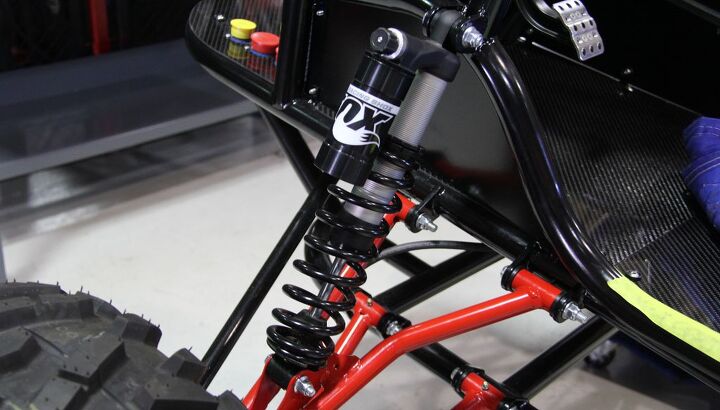









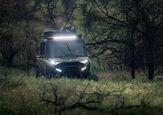

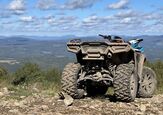
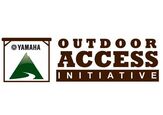
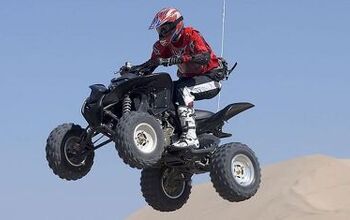
![Derek Guetter Crashes During Backflip [video]](https://cdn-fastly.atv.com/media/2022/10/24/8744073/derek-guetter-crashes-during-backflip-video.jpg?size=350x220)
![Pedal Powered Side-by-Side [video]](https://cdn-fastly.atv.com/media/2022/10/24/8744132/pedal-powered-side-by-side-video.jpg?size=350x220)

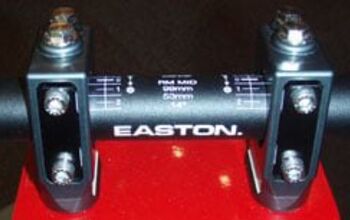
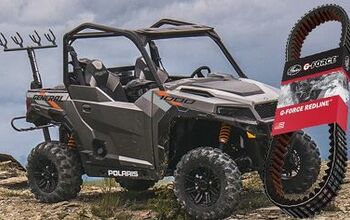
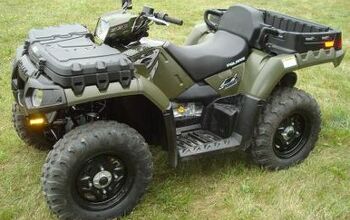


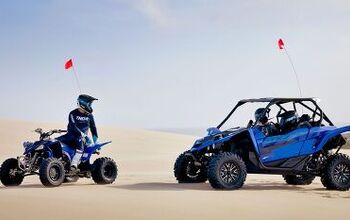


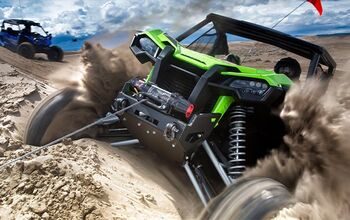
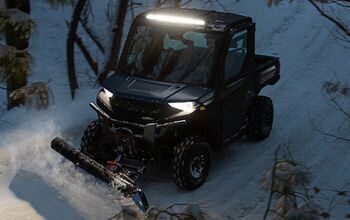
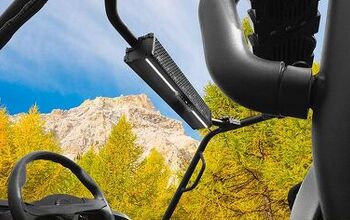
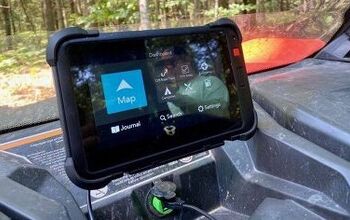
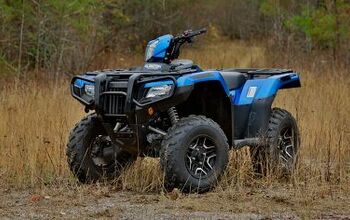

Comments
Join the conversation